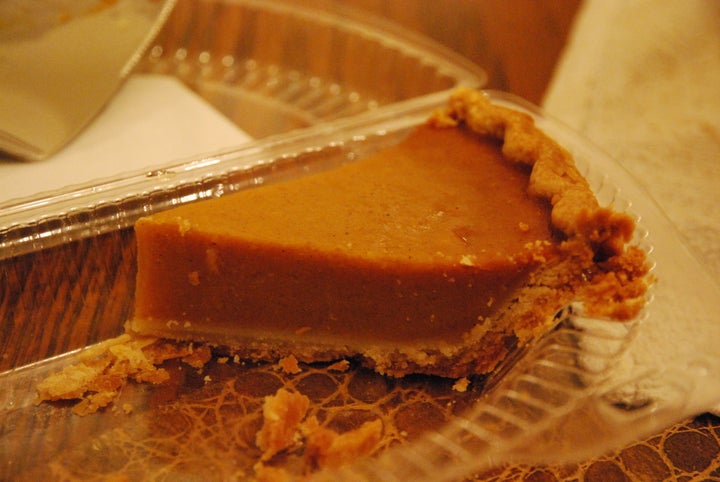
By Tamara Duker Freuman for U.S. News Health
Hosting Thanksgiving dinner these days is not for the faint of heart. As the guest list grows, so too does the list of dietary restrictions.
There have always been your vegetarian cousin and your uncle with diabetes. But this year, your sister with Irritable Bowel Syndrome (IBS) is bringing her gluten-intolerant boyfriend, and your nephew with the nut allergy will be joining you. Mom called to remind you that your dad's cholesterol is through the roof, so please go easy on the saturated fat when cooking this year. Oh, and did she mention she's just been diagnosed with lactose-intolerance?
More from U.S. News Health:
Best Foods to Eat for Your Mood -- and a Few Bad Ones
What is Gluten, Anyway?
Food Intolerance: Fact and Fiction
Take a deep breath, and put away the Excel spreadsheet. Hosting a successful and delicious Thanksgiving meal for a digestively diverse crowd doesn't necessarily translate into more work. It just means you need to get smart on strategies that make each dish meet the needs of most people at the table. Here are some tips to get started:
Keep the side dishes vegetarian. By making most -- or all -- side dishes vegetarian-friendly, you save yourself the work of having to come up with a separate vegetarian entrée for the non-meat eaters. Your veggie guests will leave full and satisfied if they can fill their plates with all the vegetable and grain-based dishes you prepare. So use vegetable stock instead of chicken stock in stuffing (and leave out the sausage); use kosher (gelatin-free) marshmallows in the sweet potato casserole and use smoked paprika instead of bacon to flavor roasted Brussels sprouts. (Alternatively, you can serve bacon-infused sauces or dressings that can be served on the side if you just can't envision Thanksgiving without bacon!)
Use lactose-free products in all recipes that call for dairy. Lactose-free versions of milk, plain yogurt, and sour cream are available nationwide, and lactose-free plain kefir -- a thick, drinkable yogurt -- is a great stand-in for heavy cream. This swap won't affect the taste or texture of your dishes at all, but it will make them much more comfortable to digest for guests with IBS and lactose intolerance. Plus, lactose-free kefir is a lower-calorie and lower-cholesterol alternative to heavy cream. As a result, your weight-watching relatives can feel much less guilty about having a nibble of mashed potatoes or a slice of pumpkin pie. Note that aged cheeses (cheddar, Parmesan, etc.) and butter are virtually lactose-free; moderate portions of foods containing these ingredients should be well-tolerated by most guests.
Minimize the presence of wheat flour at the table, and consider whole-grain, gluten-free alternatives. Traditional bread-based stuffing isn't doing anyone any favors -- it's a no-go for diabetics as well as weight-conscious and gluten-intolerant guests. Why not use wild rice or quinoa as the base for a healthier and more nutritious stuffing loaded with traditional flavors like chestnut, mushroom, sage and thyme? A dish like this also adds substance to a vegetarian meal. Separately, note that wheat flour is found in many store-bought convenience foods used in holiday fare -- French's French Fried Onions, for example, to top green bean casserole or Campbell's Cream of Mushroom soup for the gravy. If you use these ingredients in your recipes, try seeking out gluten-free substitutes, or serve them on the side whenever possible to avoid contaminating the whole dish for those who must avoid gluten. If you're making gravy from scratch, swap all-purpose flour for sweet rice flour to make it gluten-free. Easy as pie!
Speaking of pie, make sure to offer at least one dessert that can be enjoyed by the gluten-free and nut-free crowd. If apple and pecan pies are already on the menu, why not offer pumpkin in an alternative form, like individual custards or gluten-free quick bread? How about a flourless chocolate cake or chocolate-dipped poached pears? Living Without magazine publishes a terrific holiday edition full of allergy-friendly recipes, and a simple Google search will yield recipes for hundreds of allergy-friendly desserts that can be enjoyed by everyone at the table. Alternatively, gluten-free baking mixes for cookies, cakes and brownies -- most of which are also nut-free -- are widely available in supermarkets nationwide and help you whip up another dessert in no time flat. As if it needed to be said, fresh fruit is always an appropriate and safe option for ending an indulgent holiday meal. Simply offering a bowl of clementines or platter of fresh grapes is a gesture that will be appreciated by guests with dietary restrictions, and those watching their weight or blood sugar levels.
The downside of hosting a wildly successful holiday meal in which everyone feels included, of course, is that they're likely to come back next year. Consider yourself warned!
Keep calories in check at Thanksgiving with these tips from the MD Anderson Cancer Center.
Tamara Duker Freuman, M.S., R.D., C.D.N., is a NYC-based registered dietitian whose clinical practice specializes in digestive disorders, Celiac Disease and food intolerances. Her personal blog, www.tamaraduker.com, focuses on healthy eating and gluten-free living.
